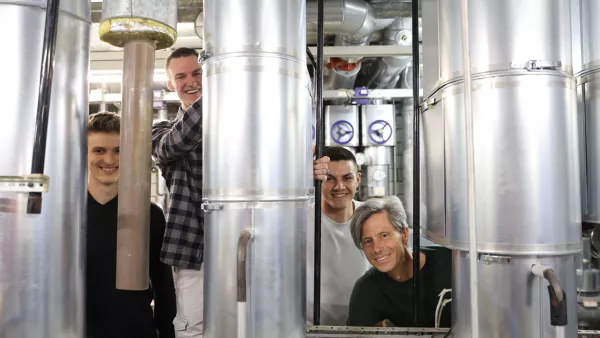
When planning measures to combat the gas shortage, a temporary closure of the university buildings was discussed intensively at RWU. Anchoring climate protection in teaching and research is an important component of RWU's future climate protection concept. However, in order not to impair teaching again after the pandemic-related restrictions, technical measures were introduced and a university closure was rejected.
Energy-saving measures at RWU
Mattis Leissner, Kevin Nafz and Dominique Mutz investigated the potential savings that a temporary return to online teaching over Christmas would have had as part of a lecture by Professor Dr. Thomas Schreier-Alt in the Energy and Environmental Engineering degree program. They discovered that the energy-saving measures were successful even without closing the university. Compared to the already energy-saving Corona-December 2021, around fourteen percent of thermal energy was saved. The analysis was supported by Hartmut Gräter, the climate protection manager of the Baden-Württemberg Ministry of Science, Research and the Arts, who is based at RWU, and by Tillman Pfaue, who is responsible for building management at RWU as Head of Technical Operations I. How was it possible to save gas despite in-person teaching?
When the gas system kicks in
The energy requirements of all RWU buildings in the Welfenareal and Töbele university areas are covered by a wood chip system as long as the temperatures are at least four degrees above freezing. Only when temperatures drop further does the gas system help out. A look at the climate tables from the last few years shows: A warm phase often sets in in mid-December. This was also the case in December 2022, with temperatures below four degrees on only a few days. The mild December made it possible to supply the buildings largely with wood chips and save gas.
The analysis also revealed where the shoe pinches. There is no central digital recording of consumption data for individual buildings. This makes it difficult to quickly identify and rectify shortcomings. In addition, the listed V-/P-/M-complex and the teaching swimming pool have a critical building fabric due to the ageing structure.
The conditions for comprehensive measurement and evaluation will be created in the coming months. The data obtained will then help to implement the upcoming measures in a targeted and economical manner.
Text: Thomas Schreier-Alt/ Hartmut Gräter/ Vivian Missel
Downloads
|
jpg
(803 kB)
|
|
|
jpg
(686 kB)
|
|
|
pdf
(301 kB)
|